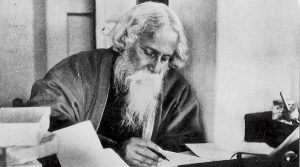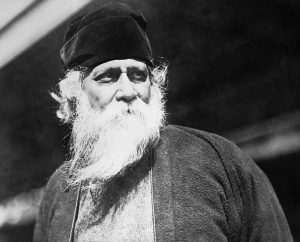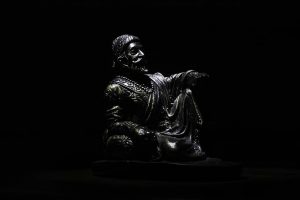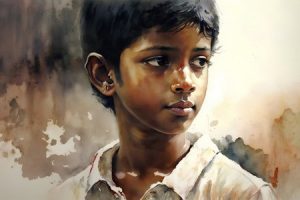
Rabindranath Tagore was a master storyteller who skillfully explored various dimensions of human existence. His short story “Subha” delves into the complexities of human relationships and the devastating consequences of societal estrangement. This essay discusses the character of Subhashini and argues that the protagonist’s alienation led to her social ostracism.
The name foreshadows her tragedy:
Subhashini was the youngest of three daughters. Her sisters were named Sukeshini, meaning a woman with long and beautiful hair. The other was named Suhasini, which meant one with a beautiful smile. Both of them had been successfully married off by the family. Subsequently, the name ‘Subhashini’ meant the individual who could speak eloquently. However, ironically it represented her inability to speak, “When the girl was given the name of Subhashini, who could have guessed that she would prove dumb?” Tagore uses the name to metaphorically foreshadow her tragic circumstances.
Subhashini’s alienation due to her impairment:
It is seen that the unmarried Subhashini “lay like a silent weight upon the heart of her parents”. Society was under the false impression that since she “did not speak”, she “did not feel”. Everyone anxiously discussed her bleak future before her without realising that it hurt her sentiments. She felt like a curse had fallen on her family, and therefore she “withdrew herself from ordinary people and tried to live apart”. She was further alienated from her family as her mother believed her to be an intimate part of herself. Therefore, she considered Subha’s disability a “fault in her”, which was a “source of personal shame”.
The other children were afraid of her and did not play with her due to her ‘noontide’ like silence. Consequently, she found solace in the lap of nature. Whenever her work was done, she went and sat by the riverside. She listened to “The murmur of the brook…the songs of the boatmen, the crying of the birds and rustle of trees” and felt a deep bond of connection with her surroundings. Two cows, named Sarbbashi and Panguli, were her closest friends. Both Subha and her animals understood each other. They were a source of comfort whenever she was sad. Thus, nature became her companion, providing her with the comfort and companionship she longed for from her peers.
Alienation led to Subha’s social ostracism:
Subha’s unmarried status ignited apprehension and gossip among the villagers, who threatened to socially outcast Banikantha and his family, “People blamed them, and even talked of making them outcasts”. The mere possibility of a tarnished reputation led to a rift in the family. Banikantha decided to go to Calcutta and find a suitable match for his daughter. This isolated Subha from her friends, as she had to leave her cows, kittens and only friend, Pratap. Furthermore, her lack of agency in decision-making regarding her marriage accentuated her alienation, as her household concealed her physical impairment to secure a suitable match.
When the suitors came, her mother, driven by societal expectations, dressed her up in a way that concealed her natural beauty. Despite Subha’s tears, her mother remained unsympathetic, fearing swollen eyes that could expose the bride’s distress. This highlights the internal conflict faced by her. Subha is forced to suppress her emotions and conform to societal norms, further exacerbating her sense of alienation.
Subhashini’s parents anxiously awaited the bridegroom’s verdict, while he ruminated about his marriage. Unbeknownst to the groom, she could not speak, leaving her feeling isolated and misunderstood. Although her eyes conveyed her feelings, they went unnoticed and uninterpreted by those around her. Subha’s silence and the subsequent revelation of her inability to speak only heightened her imminent social ostracisation by her in-laws. All of this deepened her emotional suffering.
Conclusion:
Hence, one sees that In Tagore’s story, Subha’s family alienates her and forcefully marries her to an unknown person. When her in-laws come to know about her disability, they ostracise her. Her character serves as a poignant representation of the struggles faced by individuals with disabilities. As readers delve into the depths of her story, they are compelled to reflect on their role in fostering an inclusive and compassionate society.
It is also interesting to listen to Tagore’s Rabindrasangeet, which is available on Phalguni Mookhopadhaya’s Youtube Channel — https://www.youtube.com/@pmbrainware





